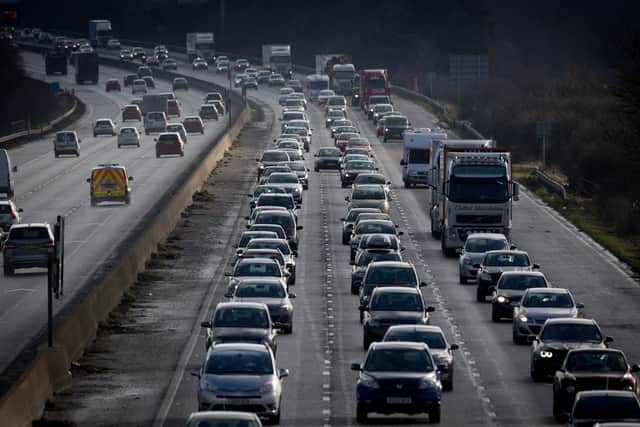Clean Air Zone ruled out for South Gloucestershire over ‘limited’ impact
and live on Freeview channel 276
South Gloucestershire Council has ruled out introducing a Clean Air Zone over its ‘limited’ impact on cutting down pollution levels - but is considering turning over more road space to public transport and cycle lanes.
As the local authority opened a consultation on a Clean Air Action Plan for the next four years, officers said a Clean Air Zone - which can charge owners of more pollutive vehicles to enter a zone - would not be appropriate for the area.
Advertisement
Hide AdAdvertisement
Hide AdThey said the measure would not suit the council’s wider plan to reduce pollution across South Gloucestershire and ultimately help council leaders achieve carbon neutral status by 2030.
Instead, the Clean Air Action Plan features a total of 30 actions mostly aimed at reducing transport emissions across the region. They include considering a cap on the number of parking spots for new developments, reducing road speeds and turning over road space for bus and cycle lanes.
Improving lighting along the Bristol to Bath railway path and supporting schools introduce park and walk schemes are also on the plan, which sets out the importance of the challenge by providing figures whch show 217 people die each year in the authority area because of air pollution.
The plan also said that out of 102 NO2 pollution monitoring stations in 2019, and 92 in 2020, one recorded concentrations below World Health Organisation guidelines. Focus has previously been on Staple Hill and the A420 from Kingswood to Warmley, and in particular Hill Street where the highest NO2 concentration has been recorded.
Advertisement
Hide AdAdvertisement
Hide AdBut as for tackling the issue by using a Clean Air Zone, like in Bristol, the idea has been dropped. On providing a reason for why the idea was not pursued, the council officers said: “A CAZ isn’t appropriate for South Gloucestershire given the limited scale of exceedance of pollution objectives.
“It will take considerable time to develop and approve a CAZ, in which time vehicles will be cleaner. The Clean Air Action Plan focusses more widely at reducing pollution across South Gloucestershire beyond basic compliance with air pollution objectives.”


A Clear Air Zone is a designated area where measures are introduced to reduce air pollution levels. Typically, this is done by applying a daily charge to more polluting vehicles though there are four types of CAZ, ranging from Class A - D. Each band charges a particular set of vehicles. For example, Bristol’s CAZ is Class D, charging £9 for cars and taxis while HGVs, buses and coaches are charged £100-per-day. Bath has a Class C zone which charges private hire cars and taxis, HGVs, coaches and buses.
Last week, Bristol mayor Marvin Rees said the CAZ could be scrapped if pollution levels fell. The city council was ordered by the Government to reduce nitogen oxide levels back in 2017, and was given the go-ahead of a CAZ in 2020 - but delays put the start date back to November 28 this year.
Advertisement
Hide AdAdvertisement
Hide AdMost of nitogen oxide comes from transport. In South Gloucestershire, the council officers, writing in the Clean Air Action Plan, said car usage was a ‘major challenge’, adding: “South Gloucestershire can experience severe traffic congestion at peak times. Since 1991 traffic on the roads of South Gloucestershire has increased by 30%, but within the North Fringe of Bristol, traffic has increased by 50%.
“Improvements have been made to the public transport system, but traffic congestion continues to adversely affect bus journey times and reliability42 . Many short journeys are also still made by car and there is a lot of potential for these to be walked or cycled and for the longer journeys to be taken by public transport or broken up with intercepts, such as Park and Rides and sustainable transport hubs.
“The measures presented in this Clean Air Action Plan are intended to be targeted towards the predominant sources of emissions within South Gloucestershire over which the council has some level of control.”
To view or comment on the Clean Air Action Plan, click here. The consultation closes on January 31.
Comment Guidelines
National World encourages reader discussion on our stories. User feedback, insights and back-and-forth exchanges add a rich layer of context to reporting. Please review our Community Guidelines before commenting.
